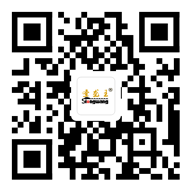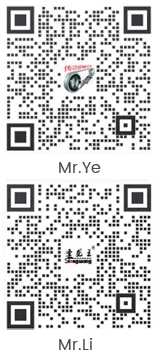Service Hotline:400-670-3800
What aspects need to be involved in the design of the synchronous belt wheel
- Categories:Common Problem
- Author:
- Origin:
- Time of issue:2021-03-10
- Views:0
(Summary description)The breakage and damage of the load-bearing rope of a synchronous belt during operation is a common form of failure. The reason for the failure is that the belt has excessive pulling force on the load-bearing
What aspects need to be involved in the design of the synchronous belt wheel
(Summary description)The breakage and damage of the load-bearing rope of a synchronous belt during operation is a common form of failure. The reason for the failure is that the belt has excessive pulling force on the load-bearing
- Categories:Common Problem
- Author:
- Origin:
- Time of issue:2021-03-10
- Views:0
The breakage and damage of the load-bearing rope of a synchronous belt during operation is a common form of failure. The reason for the failure is that the belt has excessive pulling force on the load-bearing rope in the process of power transmission, and the load-bearing rope is pulled off. In addition, when the diameter of the selected active fishing wheel is too small, the load-bearing rope will bear greater periodic bending fatigue stress in the entering and exiting belt, and bending fatigue breakage will also occur. We must pay attention to these issues when designing.
There are many materials for timing belt wheels, and different materials are suitable for occasions with different requirements. For example, some machinery needs to have high corrosion resistance, users can buy copper or stainless steel timing belt wheels. Of course, in order to improve its corrosion resistance, the factory will also perform various treatments on its surface. Such as natural color oxidation, salt spray blackening, galvanizing, high frequency quenching and so on.
Synchronous belt is a new plastic transmission belt developed by occluding the advantages of synchronous belt pulley belt transmission, chain transmission and gear transmission. It consists of a toothed working surface meshing with the tooth grooves of the toothed belt wheel for transmission. Its strong layer is composed of fiber materials or metal materials with high tensile strength and small elongation, so that the synchronous belt can be in the transmission process. The length of the pitch line remains basically unchanged, and there is slippage between the belt and the pulley during the transmission process, so as to ensure that there is no slippage between the main and transmission wheels. Therefore, it is necessary to understand the failure mode when designing the synchronous belt.
When designing the synchronous belt wheel, not only the requirements of the use environment must be taken into consideration, but also more aspects need to be involved. When designing the gears of the synchronous pulleys, the production staff need to consider the transmission power, input speed, transmission ratio and so on of the gear transmission. These are considered to determine the center distance and modulus of the timing belt wheel. Of course, if you already know its center distance and modulus, you can directly make the next step. Next, the production staff will calculate the basic parameters of the gear. When calculating these aspects, the production staff need to use geometric calculation methods. After the basic parameters of the gear of the timing belt wheel are calculated, the contact strength of the tooth surface and the bending strength of the tooth root can be accurately checked. *Later, when the production staff was checking the timing belt wheel, it was found that its strength was insufficient, and it needed to be calculated again.
For customers who have just come into contact with synchronous pulley transmission, they may not have a deep understanding of it. Our company has a special synchronous pulley product catalog for free download and reference. All the classic styles and sizes of the commonly used synchronous wheels are described inside. The tooth types covered range from inch teeth, trapezoidal teeth, arc teeth, tooth plates to toothed bars, which can meet most of the requirements.
points to customer requirements. If the customer selects the style and size of the synchronization wheel on the data, they only need to provide the following information (we will produce pictures based on the information provided by the customer for the customer to verify):
①Synchronous wheel style code: such as AF type, AS type, BF type, BS type, etc.
②Material (45 steel and aluminum parts are commonly used)
③Tooth shape? (Same as the tooth shape of the belt used together)
④Number of teeth?
⑤The belt width to be used together
⑥The diameter of the center hole?
⑦Whether the center hole has a keyway
⑧ Whether the retaining ring (also called flange) is used on both sides of the synchronous wheel to prevent the belt from falling off
⑨Surface treatment (if it is steel parts generally need to be blackened, if it is aluminum parts generally do not need to be treated)
⑩Quantity (If the quantity is large, the corresponding price will be cheaper)
If in doubt, the following examples illustrate each item:
①Synchronous wheel style code
According to the actual needs of the equipment, BS type is without retaining ring, BF type is with retaining ring, and AS type is without retaining ring
and opened two lightening grooves to reduce weight (usually used when the diameter of the synchronous wheel is larger)
Scan the QR code to read on your phone

National unified free hotline:
Address: Longshan Town, Cixi City, Zhejiang Province
TEL:0574-58967770 / 58967771
FAX:0574-58997698 / 63785557
E-mail:llm@cn-slw.com

Copyright © 2021 Ningbo Slongwang Synchronous Belt Co.,Ltd. All Rights Reserved. 浙ICP备2021002841号-1 Powered by www.300.cn




